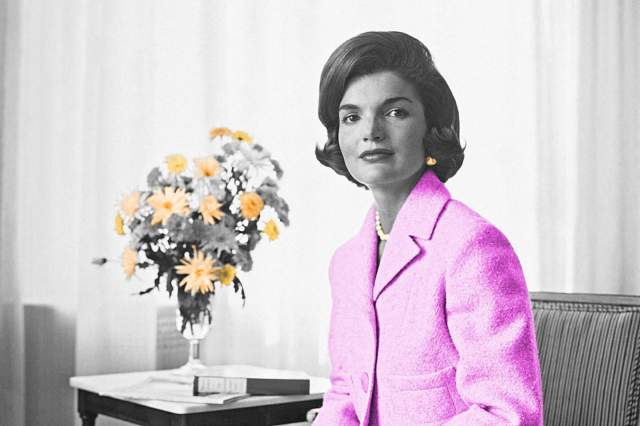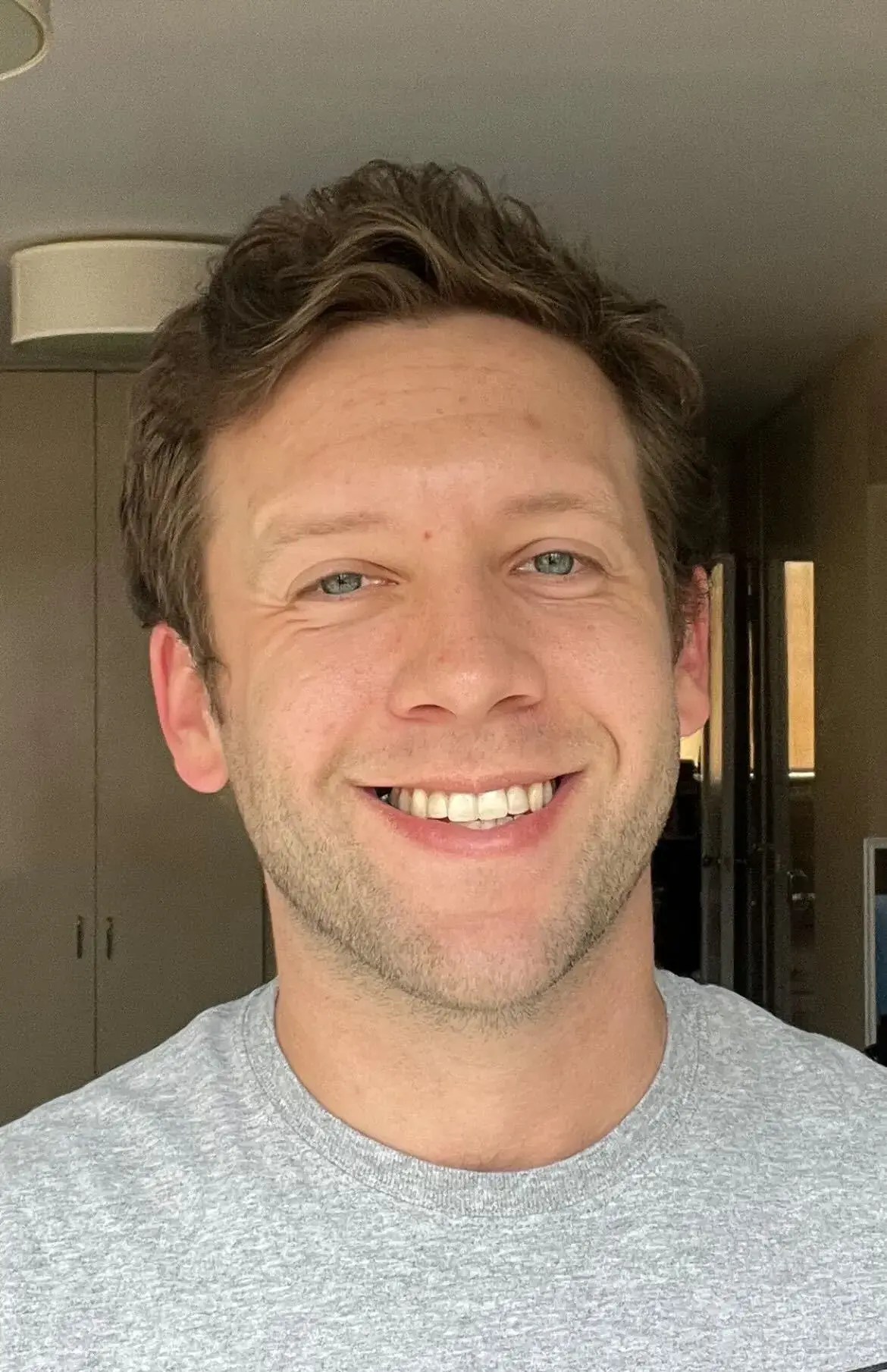
Her First Role in D.C. Was as a Journalist
In 1951, shortly after finishing her studies at George Washington University, Jackie (then known as Jacqueline Lee Bouvier) embarked on a journalism career. Working as the “Inquiring Camera Girl” and producing a daily column of the same name for the Washington Times-Herald, Bouvier roved the streets of D.C. with her camera in hand, taking pictures of people she encountered and interviewing them about pressing current affairs. She also covered major events of the time, including President Dwight Eisenhower’s first inauguration in 1951 and the coronation of Queen Elizabeth II in June 1953, the latter of which was one of her final assignments.
While many of her columns featured everyday Americans, she asked questions of high-profile figures as well. One example was her brief interview with then-Vice President Richard Nixon for the April 21, 1953, edition of her column, in which she asked about his views regarding Senate pages. The column also included an answer on the same topic from then-Senator John F. Kennedy, whom she had met at a dinner party the year prior and would go on to marry five months later. Nixon, of course, went on to lose to JFK in the 1960 U.S. presidential election.

She Earned an Emmy for a Televised Tour of the White House
In 1941, long before she became a resident of the White House, Jackie toured the building with her mother and sister, and was dismayed by the lack of historical furnishings and informative pamphlets. Shortly after moving in with her husband in 1961, she made it her mission to overhaul the White House experience. As a young, attractive couple, John and Jackie did away with the archaic conventions of administrations past, and began cultivating a more comfortable environment. But it was Jackie’s physical renovation of the building that really stood out.
Enlisting the help of Americana collector Henry Francis du Pont, French designer Stéphane Boudin, and decorator Dorothy Parish, the first lady began work on a massive restoration project. Her goal was not merely to redecorate but to showcase the history of the mansion and the country itself. “It must be restored, and that has nothing to do with decoration,” she told Life magazine of her plans. “That is a question of scholarship.”
Within a mere two weeks, she had used all of the initial $50,000 budget to refurbish the private living quarters — and that was just the beginning. From outfitting the Blue Room with French furniture that President James Monroe had ordered back in 1818, to redesigning the Treaty Room in a Victorian style, Jackie left no corner of the White House untouched. Life featured the project in a September 1961 issue, but it found its biggest spotlight on February 14, 1962, when Mrs. Kennedy unveiled her stunning work on television. Accompanied by CBS News correspondent Charles Collingwood, Jackie led a guided tour of the building on CBS and NBC, drawing an estimated 80 million viewers and earning an honorary Emmy Award for the production.

She Spoke Multiple Languages
John F. Kennedy may be known for the line “ich bin ein Berliner,” but Jackie was the true polyglot of the family. A lover of languages from a young age, Jackie helped John translate French research books into English when he needed to study up on politics in Southeast Asia, where the French had a heavy presence. But her linguistic prowess really shone through on the campaign trail.
When JFK campaigned for reelection to the U.S. Senate in 1958, Jackie gave her first campaign speech in the native tongue of a French-speaking group in Massachusetts. As she continued to tour the country, she also showcased her familiarity with Italian, Polish, and Spanish. In fact, during the lead-up to the 1960 presidential election, Jackie was the star of a minute-long campaign ad conducted entirely in Spanish.
More Interesting Reads

She Coined the Term “Camelot” About the Kennedy Administration
Shortly after her husband’s funeral, Jackie welcomed Life magazine reporter Theodore H. White to the family compound in Hyannis Port, Massachusetts, in an effort to ensure JFK’s lasting legacy. During the interview, she coined a term that’s now synonymous with her husband’s administration: “Camelot,” a reference to both Arthurian legend and JFK’s favorite Broadway musical. In likening his presidency to the storied court, Jackie sought to establish her husband as an almost mythical figure. Quoting the musical, she stated, “Don’t let it be forgot, that once there was a spot, for one brief, shining moment that was known as Camelot.” She went on to add that while there would be other Presidents, there would “never be another Camelot again.” Editors at Life reportedly objected to the Camelot theme running throughout the interview, but Jackie was insistent on keeping it and even added her own edits to White’s notes.

She Became a Successful Book Editor in New York City
Working with words proved to be one of Jackie’s strong suits, and she spent the final decades of her life in publishing. Having not had a paying job since 1953, she returned to the workforce as a book editor in 1975, after the death of her second husband, Aristotle Onassis. Tommy Guinzburg, the president of Viking Press, brought her in as a consulting editor working primarily on titles that aligned with her interests in history and art. The first title she edited was a work called Remember the Ladies, about the role of 18th-century American women.
In 1977, Viking controversially published a fictional book involving a plot to assassinate a President based on JFK’s brother Ted Kennedy, which led to Jackie’s resignation. The next year, she became an associate editor at Doubleday, where she worked with pop singer Michael Jackson on his 1988 memoir, Moonwalk, among other titles. She continued to work in publishing until her passing in 1994.

She Helped Save Grand Central Terminal From Being Demolished
Much like she did in preserving the history of the White House, Jackie played a key role in maintaining one of New York City’s most prominent landmarks. In the mid-1970s, developers hatched a plan to demolish part of Grand Central Terminal to build an office tower. The former first lady was among a group of notable New Yorkers who objected to the plan, and in 1975, she spoke at a press conference at Grand Central’s famed Oyster Bar restaurant to protest the destruction of the Beaux Arts-style structure. She and other preservationists worked to ensure the building’s protection, which was ultimately assured by the U.S. Supreme Court decision Penn Central Transportation Co. v. New York City. A plaque dedicated in 2014 at the entrance on 42nd Street and Park Avenue honors Jacqueline Kennedy Onassis for her role in saving the indelible Manhattan icon.
And Grand Central Terminal isn’t the only NYC landmark to commemorate her legacy. Located at the northern end of Central Park, where Jackie was known to jog, the Jacqueline Kennedy Onassis Reservoir pays homage to the former first lady’s contributions to the city. The artificial body of water, constructed between 1858 and 1862, spans 106 acres and was the largest human-made body of water in the world at the time of its creation.












